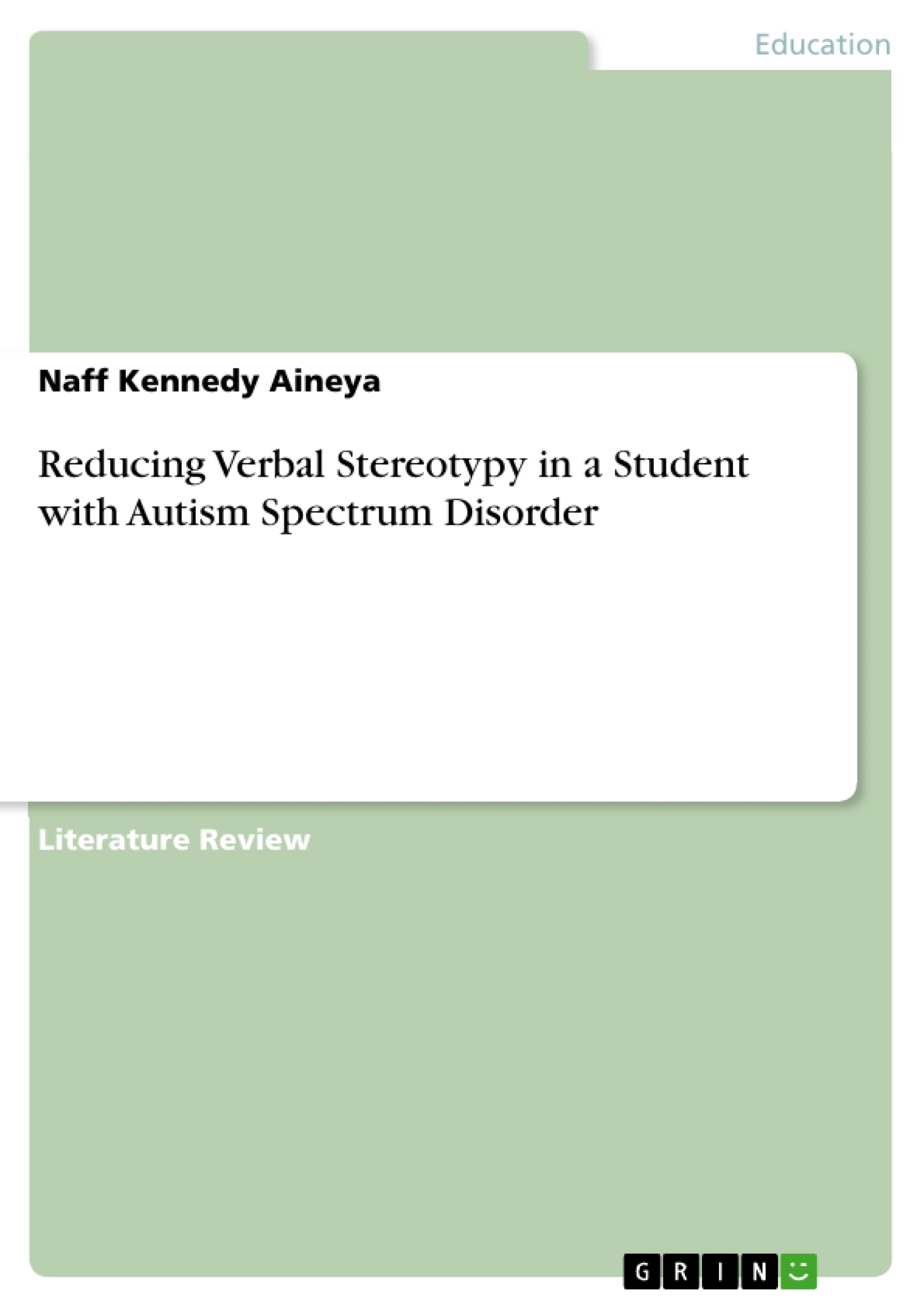This paper expounds on the early features of autism spectrum disorder (ASD) and frequencies of involvement in daily games, plays, and physical activities. Stimulus control using red card/green card, vocal self-stimulation, and the effect of multiple interventions for decreasing speaking stereotypy in a child or student with autism.
A student with autism spectrum disorder has speaking, learning, and socialization problems and consistently involve in repetitive habits. Studies show adequate interventions for the students are lacking, but development is made in learning, socialization, adaptive and intellectual skills. Stereotyping is a core symptom referred to repetitive behaviorist and topographic invariant. Echolalia, contextual verbs, and vocalization are stereotypies controlled by automated positive reinforcement. The condition hinders learning if the behavior consumes the student's daily activities and limits participation in activities, such as vocation, leisure, and skills in academic settings. Therefore, treating stereotypies decreases the stigmatization of a student with ASD.
Ahearn et al. (2007) also confirm that autism condition regards impairment in speaking, listening, socialization, and communication, indicated by restrictive and repetitive stereotyped behavior. It is critical to detect the situation early and begin targeted treatment. Memari et al. (2015) suggest that children with vocal stereotypy condition face challenges concerning age group games and fail to develop social relationships. Esposito et al. (2021) examined stereotypy habits shown by a seven-year child with autism and controlled by automatic reinforcement under stimulus conditions. Using discriminative training method. The discriminative training involves matching a green card (SD) with free access to vocal stereotypy and a red card (SD-absent) with interruption of stereotypy and vocal redirection. Kahveci & Bulut (2019) concentrated on the non-aversive vocal and speaking teaching method with reinforcement protocols to enhance the frequency of communication attempts in students with ASD. Vocal stereotypy is now understood to have the potential for learning development, although they have delayed social consequences. Stereotypy's underlying causes are unknown, and many researchers and scientists have done studies on appropriate intervention, but the result has produced varied results.
Table of Contents
- Early Features of Autism Condition (ASD)
- Frequencies of Involvement in Daily Games, Plays, and Physical Activities
- Stimulus Control Using Red card/Green Card
- Nonlinguistic Contingent Responses, Imitation, and Linguistic Contingent Responses
Objectives and Key Themes
This literature review explores the challenges faced by students with Autism Spectrum Disorder (ASD) who exhibit verbal stereotypy, a repetitive behavior that can hinder their social, academic, and communication development. The review examines various intervention strategies aimed at reducing verbal stereotypy, focusing on the use of stimulus control techniques, reinforcement protocols, and non-aversive communication teaching techniques. The study aims to provide insight into the early features of autism, the impact of stereotypy on daily activities, and the potential benefits of specific interventions for improving communication and reducing stereotyped behavior in students with ASD.
- Early detection and intervention for verbal stereotypy in students with ASD
- Impact of verbal stereotypy on social interaction and daily activities
- Effectiveness of stimulus control methods in reducing verbal stereotypy
- Application of reinforcement protocols and non-aversive communication teaching techniques
- Exploring the potential of various interventions for improving communication skills
Chapter Summaries
- Early Features of Autism Condition (ASD): This section discusses the early signs, age of onset, and presentation modes of autism in children, including delays in language development and stagnation in development. The authors highlight the importance of early identification and intervention.
- Frequencies of Involvement in Daily Games, Plays, and Physical Activities: This section explores the challenges faced by children with vocal stereotypy in participating in social games and developing social relationships. Research findings indicate lower levels of physical activity and participation in peer play among students with ASD, suggesting a connection between socio-demographic factors and physical activity.
- Stimulus Control Using Red card/Green Card: This section examines the effectiveness of stimulus control interventions using red and green cards to reduce vocal stereotypy in a child with ASD. The authors demonstrate how discriminative training can help students learn to control their stereotyped behaviors.
- Nonlinguistic Contingent Responses, Imitation, and Linguistic Contingent Responses: This section discusses a non-aversive communication teaching technique that involves three groups: nonlinguistic contingent responses, imitation, and linguistic contingent responses. The aim of this technique is to enhance communication attempts in students with ASD by providing structured responses that reduce stereotyped behaviors and promote engagement in activities.
Keywords
Autism Spectrum Disorder (ASD), verbal stereotypy, stimulus control, reinforcement protocols, non-aversive communication teaching techniques, early intervention, social interaction, physical activity, communication skills, discriminative training, intervention strategies.
- Quote paper
- Naff Kennedy Aineya (Author), 2022, Reducing Verbal Stereotypy in a Student with Autism Spectrum Disorder, Munich, GRIN Verlag, https://www.grin.com/document/1302515



